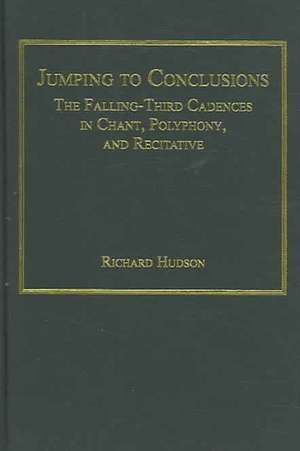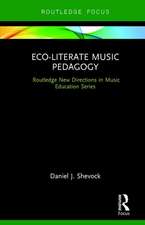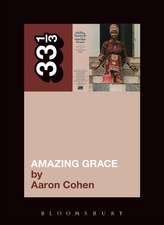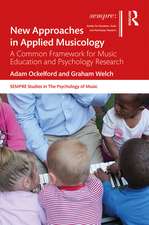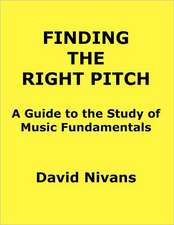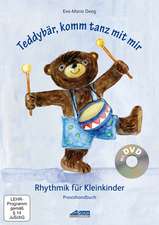Jumping to Conclusions: The Falling-Third Cadences in Chant, Polyphony, and Recitative
Autor Richard Hudsonen Limba Engleză Hardback – 28 dec 2005
| Toate formatele și edițiile | Preț | Express |
|---|---|---|
| Paperback (1) | 338.33 lei 43-57 zile | |
| Taylor & Francis – 2 dec 2016 | 338.33 lei 43-57 zile | |
| Hardback (1) | 764.62 lei 43-57 zile | |
| Taylor & Francis – 28 dec 2005 | 764.62 lei 43-57 zile |
Preț: 764.62 lei
Preț vechi: 1027.66 lei
-26% Nou
Puncte Express: 1147
Preț estimativ în valută:
146.32€ • 151.90$ • 122.01£
146.32€ • 151.90$ • 122.01£
Carte tipărită la comandă
Livrare economică 24 martie-07 aprilie
Preluare comenzi: 021 569.72.76
Specificații
ISBN-13: 9780754654070
ISBN-10: 0754654079
Pagini: 224
Dimensiuni: 152 x 229 x 19 mm
Greutate: 0.48 kg
Ediția:1
Editura: Taylor & Francis
Colecția Routledge
Locul publicării:Oxford, United Kingdom
ISBN-10: 0754654079
Pagini: 224
Dimensiuni: 152 x 229 x 19 mm
Greutate: 0.48 kg
Ediția:1
Editura: Taylor & Francis
Colecția Routledge
Locul publicării:Oxford, United Kingdom
Cuprins
Contents: Preface; Introduction. Part I The Falling-Third Cadences in Chant and Polyphony: Gregorian chant; Late 14th- and early 15th-century polyphony; Polyphony from Dufay to Palestrina. Part II The Falling-Third Cadences in Recitative: Monody and recitative in the 17th century; Later recitative; The Appoggiatura. The Conclusions: The 4-3-1 figure in history. Bibliography; Index.
Notă biografică
Richard Hudson is Emeritus Professor of Musicology at the University of California, Los Angeles, USA.
Recenzii
'This is a really stimulating book that I hope will receive the attention it deserves.' Early Music Review
Descriere
Richard Hudson presents the first comprehensive history of this special melodic cadence and examines its usage from the beginnings of Western music to the present time. The work identifies the falling-third figures as a significant element of style in polyphony from the late 14th century to the early 16th. Hudson includes new sources not previously cited on the subject, as well as new interpretations of previously cited authors. He presents new ideas concerning the falling-third cadences by well-known composers such as J. S. Bach, Telemann, Haydn, Rossini and Mozart, and provides solutions to performance problems in recitative.
